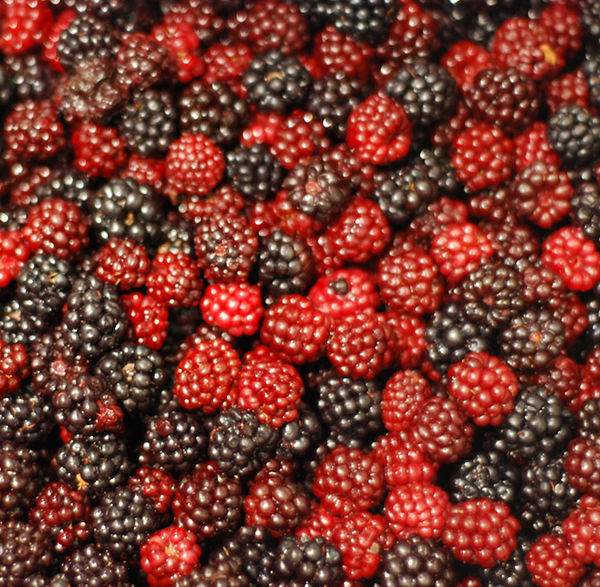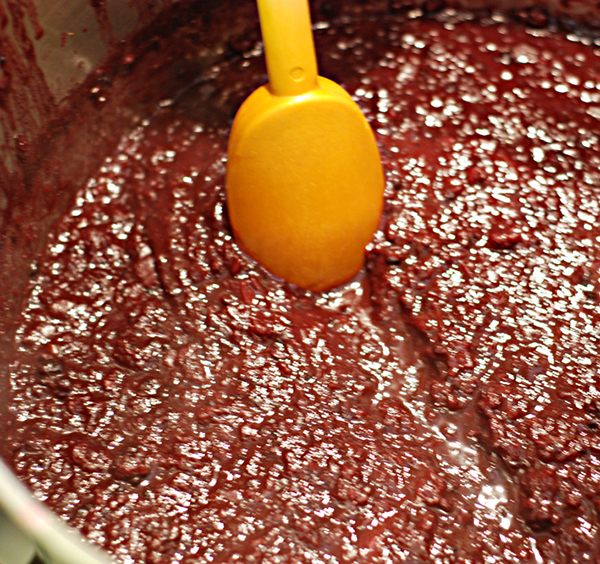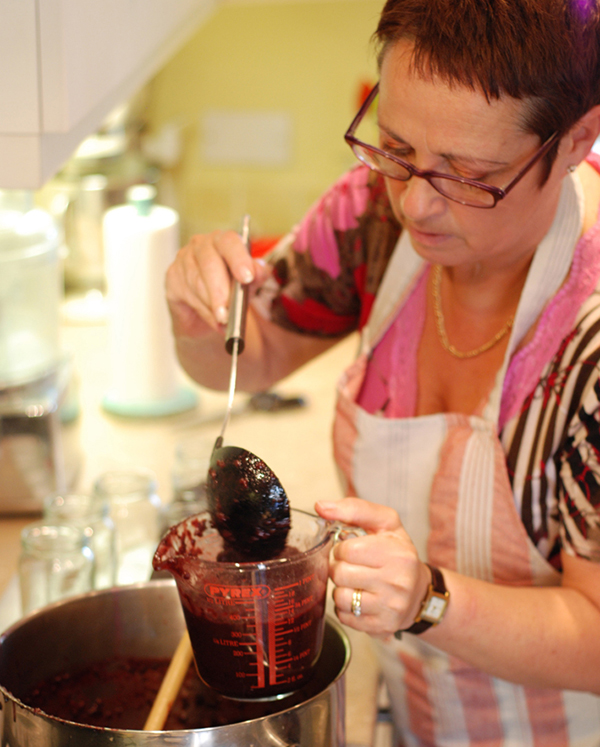This year there has been a bumper crop of blackberries, both wild and cultivated, to make my favourite Chutney and Jams. Following a wet winter,  a cold spring and the first good summer since 2006, hedgerows have been groaning with these lush berries and markets have been discounting their prices.
a cold spring and the first good summer since 2006, hedgerows have been groaning with these lush berries and markets have been discounting their prices.
Walks around country lanes in Worcestershire in late summer gave us many opportunities to pick blackberries. One of my earliest memories is watching my mother make blackberry and apple jam after we had been out foraging for blackberries. I also remember a noisy, volcanic pressure cooker used to soften the fruit, it put me off using one for years!
The name is derived from bramble meaning prickly. Originally a wild plant, the Greeks and Romans used blackberries to treat minor ailments, including gout. Between 1914 and 1918, schoolchildren in England were encouraged to pick blackberries. These were made into juice and sent to soldiers in France and Germany.
Judge Logan‘s research in California influenced the development of modern varieties of blackberries. Also known as the bramble, thornless varieties of blackberries were introduced in the 1920s. Cultivated blackberries are larger and sweeter than those found in country lanes. Well known varieties include Bedford Giant, Loch Ness and Merton Thornless.The leaf can be made into tea, with a similar flavour to Earl Grey. Old bramble shoots are often used in basketry.
Blackberries flower in July and fruit between August and October. Wild blackberries ripen best on south facing hedges in direct sunlight. If you are foraging, pick away from main roads. Wear protective clothing as brambles may scratch you and the juice stains hands. Pick above knee high and only pick fully ripe and black fruit, as the fruit does not ripen further once picked. Unusually, bushes display blossom, red and green fruit at the same time. Soak the fruit in cold water for half an hour before using to remove any insects.
Blackberries can be preserved into jam, chutney, wine, vinegar and as a cheese mixed with apples. Last week at Vale House Kitchen Cookery School we made a large batch of Blackberry and Apple Jam. The aroma in the kitchen was quite intoxicating.
Blackberry Chutney
This is a warm, spicy chutney with a rich blackberry colour. When making chutney, I prefer to use plastic or silicon utensils when stirring and potting up. Unlike wooden spoons they are easy to clean and unlike metal spoons they do not react with vinegar and fruit acids. Twist top lids are essential for chutney as waxed discs and cellophane covers cause shrinkage and result in the chutney drying out. Some fussy instructions but worth following for a preserve which takes a couple of hours to make.
Makes around 1.4kg ( 3lb)
1.4kg (3lb) blackberries
450g (1lb) onions
450g (1lb) cooking apples, peeled and cored
15g ( ½oz) salt
25g (1oz) dry mustard
25g ( 1oz) ground ginger
5ml (1tsp) ground mace
5ml (1tsp) chilli flakes
600ml (1 pint) distilled malt vinegar
450g (1lb) soft brown sugar
 1. Place the blackberries in a large un-lidded preserving pan. Finely chop the apples and onions.Add them to the blackberries. Stir in the spices, salt and vinegar. Bring the mixture to the boil and reduce to a gentle simmer. Cook for about an hour, until the contents of the pan are pulpy.
1. Place the blackberries in a large un-lidded preserving pan. Finely chop the apples and onions.Add them to the blackberries. Stir in the spices, salt and vinegar. Bring the mixture to the boil and reduce to a gentle simmer. Cook for about an hour, until the contents of the pan are pulpy.
2. Add the sugar and dissolve it carefully. Continue to cook gently until the contents of the pan are thick and no “free” liquid remains. Stir frequently to prevent the chutney from sticking to the bottom of the pan. Place clean jars in a pre-heated oven at 140C (275F/Gas 1) for 15 minutes.
3.Remove the pan from the heat and the jars from the oven. Using plastic or silicon utensils, pot up the chutney, filling the jars to within 5mm from the top.
4.Seal the jars with new, vinegar resistant twist top lids. Store in a dry cupboard for 2-3 months before opening.
